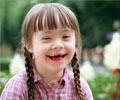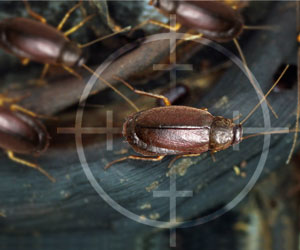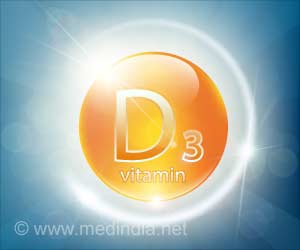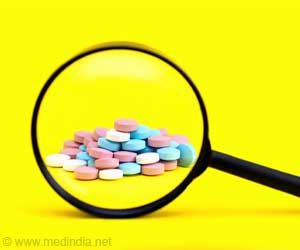World Down Syndrome Day is celebrated on 21st March every year. It raises awareness about Down syndrome worldwide. It aims to reduce the global disease burden and improve the lives of people with Down syndrome.
- World Down Syndrome Day is celebrated on 21st March every year
- Raises awareness about the disease among the general public
- Aims to improve the quality of life of Down syndrome patients
- Its target is to reduce the global burden of this genetic disorder
This year, DSi urges everyone from all walks of life to connect with each other to lend their voice to create awareness and advocate for the betterment of the lives of those battling Down syndrome. It also encourages everyone, including friends, colleagues, and caregivers, to show their support and solidarity for Down syndrome patients and their families.
Read More..
Objectives of World Down Syndrome Day
This year’s World Down Syndrome Day focuses on connecting with people suffering from the condition. Therefore, the aim of the “CONNECT” theme will allow us to:- Share ideas, experiences, and knowledge
- Ensure that people with Down syndrome have access to consultation and counseling services
- Empower patients with Down syndrome and advocate for equal rights
- Reach out to key stakeholders, including doctors, counselors, patient’s groups, media persons, and policymakers to bring about positive change
Genesis and Progress of World Down Syndrome Day
The origin of World Down Syndrome Day dates back to 2006 when the Down Syndrome Association of Singapore launched and hosted the World Down Syndrome Day website on behalf of DSi. Following this, a global campaign was launched by the Brazilian Federation of Associations of Down Syndrome in conjunction with DSi. Subsequently, a resolution was adopted by the Third Committee of the UN General Assembly on Thursday 10th November 2011, which was supported by 78 Member States.On 19th December 2011, the UN General Assembly passed a resolution (A/RES/66/149) at the behest of DSi, to officially observe World Down Syndrome Day on 21st March each year. Hence, from 2012 onwards, the UN has been observing World Down Syndrome Day annually on this day.
Moreover, the UN General Assembly has always encouraged its Member States and other governmental and non-governmental organizations (NGOs), and the private sector, to collectively celebrate this day across the world to generate public awareness about Down syndrome.
Significance of the Date for World Down Syndrome Day
It should be noted that the date – 21st March – is unique and apt for celebrating World Down Syndrome Day. This is because it is the 21st day of the 3rd month, which signifies the triplication of chromosome 21 or Trisomy 21, which is another name for Down syndrome.The 2021 World Down Syndrome Day Theme
The theme for the 2021 World Down Syndrome Day is ‘CONNECT With Me’. The idea for this theme came about with the emergence and progression of the COVID-19 pandemic. During the initial stages of the pandemic, people became disconnected from their loved ones, following the lockdowns around the globe. However, as the months went by, new ways to get connected emerged through the use of novel technologies, such as videoconferencing. This is a positive aspect of the COVID-19 pandemic.This year’s theme highlights the importance of connecting with people living with Down syndrome so that they don’t feel they’re being left behind. Being connected with their healthcare providers will allow them to partake in the decision-making process in an all-inclusive manner for the benefit of their own health and wellbeing.
The A-B-C of Down Syndrome
Down syndrome is named after the British physician, Dr. John Langdon Haydon Down, who first described the condition in 1862. This is a genetic disorder that is characterized by the presence of three copies of chromosome 21, instead of two, which is the normal number. This is why the condition is also called Trisomy 21.This anomaly in the number of chromosomes, which occurs in approximately 1 in 800 live births, can have drastic consequences for the affected individual. Most pronounced of these are the physical and mental disabilities and associated health issues.
Down syndrome occurs across racial, ethnic, gender, socioeconomic, and geographical boundaries. Although a baby with Down syndrome can be born to mothers of any age, the risk dramatically increases with advancing age. For example, a woman aged 35 years has a 1 in 350 chance of giving birth to a baby with Down syndrome, whereas in the case of a 40-year-old woman, this chance increases to 1 in 100.
Adequate access to healthcare, early intervention programs, and inclusive education are vital for the all-round growth and development of a child affected by Down syndrome.
Characteristic Features of Down’s Patients
Down syndrome patients exhibit some unique features that differentiate them from other people. These can be categorized into anatomical and physiological anomalies, which are briefly highlighted below:Anatomical Anomalies
- Flat face
- Almond-shaped eyes that slant upwards
- Tiny white spots on the iris of the eyes
- Small nose with flat nasal bridge
- Short neck
- Small and irregularly shaped ears
- Large tongue protruding from the mouth
- Small hands and feet
- A single line across the palm of the hand
- Big space between the big toe and its adjacent toe
- Decreased muscle tone
- Learning difficulties
- Congenital heart defects
- Intestinal blockage at birth
- Obstructive sleep apnea
- Hip dislocation
- Thyroid disease
- Anemia
- Ear infections
- Hearing loss
- Vision problems
Down Syndrome: Facts & Figures
- 1 in 700 babies are born with Down syndrome in the US
- 6,000 babies are born with Down syndrome every year in the US
- 95 percent of Down syndrome patients exhibit Trisomy 21
- Down syndrome affects all races, ethnicities, and socioeconomic groups
- 80 percent of children with Down syndrome are born to mothers below the age of 35 years
- Life expectancy of Down syndrome patients has increased from 25 years in 1983 to 60 years today
How Can You Take Action on World Down Syndrome Day?
It is important to take action today, to improve the lives of people with Down syndrome tomorrow. There are many ways we can contribute towards the betterment of the lives of this minority group of individuals. Some of these are highlighted below:- Fund-Raise: Much-needed funds can be raised by doing sporting activities that are sponsored by corporates. These could include running, cycling, swimming, mountaineering, or hiking, among many others
- Share Your Story: People living with Down syndrome should be encouraged to share their own stories in their own words. This will be more impactful in generating awareness as it will provide a human face to the disease
- Join the #LotsOfSocks Campaign: Try to create a buzz on World Down Syndrome Day by wearing multi-colored, mismatched, and crazy-looking socks. This ought to get people talking about Down syndrome and spread the word about the condition
- Get Informed: Get first-hand information from the horse’s mouth by talking to Down syndrome patients themselves and learn from their experiences. Share your newly acquired knowledge with family, friends, and colleagues
- Join an Event: Take part in an event near you or on an online platform. Joining these events will show solidarity for people living with Down syndrome, as well as help raise funds
- Advocate for Change: Advocate to bring about a positive change in the lives of people living with Down syndrome. Find out about self-advocacy and human rights issues that you can speak up for
- Light-Up in ‘Red & Blue’: Light-up a landmark, monument, or building in your city in ‘Red & Blue’ – the awareness colors for World Down Syndrome Day. This stunning display of colors will definitely be eye-catching and get people talking about their significance
Who Can Take Action?
Any and all of the following categories of individuals or organizations can take action to improve the lives of people with Down syndrome:- People with Down syndrome
- Families, friends, and supporters
- Schools, companies, and civil society groups
- Governments and communities
Conclusion
People with Down syndrome are essential and valuable members of society. They attend school, go to work, partake in decision-making that concerns their health and wellbeing, have meaningful relationships, and contribute to society in their own way.Therefore, if they are provided quality education, a comfortable and conducive home atmosphere, good healthcare, and positive support from family, friends, and colleagues, they will be able to lead fulfilling, meaningful, and productive lives.
References:
- World Down Syndrome Day: 21 March - United Nations (UN) - (https://www.un.org/en/observances/down-syndrome-day)
- World Down Syndrome Day - Down Syndrome International (DSi) - (https://www.worlddownsyndromeday.org/about-wdsd)
- Facts about Down Syndrome - Centers for Disease Control and Prevention (CDC), Atlanta, USA - (https://www.cdc.gov/ncbddd/birthdefects/downsyndrome.html)
- Down Syndrome Facts - National Down Syndrome Society (NDSS) - (https://www.ndss.org/about-down-syndrome/down-syndrome-facts/)
- About Down’s Syndrome: World Down Syndrome Day - Down’s Syndrome Association, Teddington, Middlesex, UK - (https://www.downs-syndrome.org.uk/about/campaigns/world-downs-syndrome-day/)
- Take Action - Down Syndrome International (DSi) - (https://www.worlddownsyndromeday.org/take-action)
Source-Medindia











